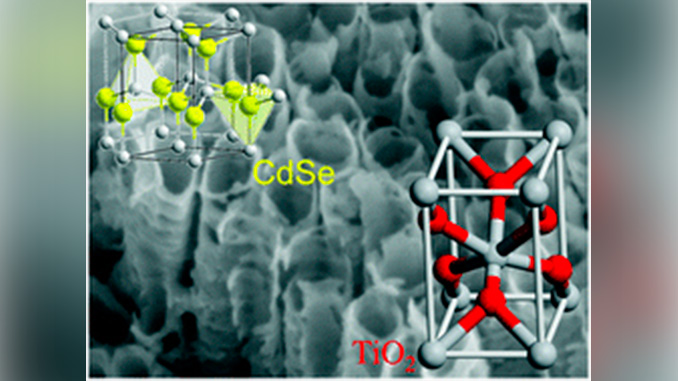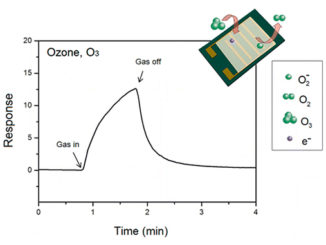
Writers: Freitas, R. G. and Lucas, F. W. S. and Santanna, M. A. and Mendes, R. A. and Terezo, A. J. and de Souza, G. L. C. and Mascaro, L. H. and Pereira, E. C.
Keywords: nanotechnology; nanotube; theoretical study
Abstract: In this work, the effects of the structural (crystallite size, stress) and electronic parameters (band gap, lifetime) on the photoelectrocatalysis and electron transport over CdSe electrodeposited inside TiO2-nanotubes (CdSe@TiO2NT) were investigated. Density functional theory (DFT) calculations of TiO2 were used to elucidate the electronic band structure and to correlate with experimental values. CdSe was grown by pulsed electrodeposition into previous and late thermal-treated TiO2NT (Sample-PTT and Sample-LTT, respectively) without blocking the nanotube’s entrance. The Rietveld refinement method was used to obtain information from crystallographic data of each photoelectrode. The lattice strains calculated from the Rietveld analysis for Sample-PTT and Sample-LTT were 0.472 and 0.540, and the average volume of the TiO2-anatase unit cell increased from 133.235(0) Å3 to 136.950(6) Å3, respectively. Sample-PTT exhibited higher experimental electron lifetime, larger than 1.0 order of magnitude compared to Sample-LTT photoanodes. The band structures and DOS obtained by computational modelling showed theoretical band gap values of 2.54 eV and 2.75 eV, which were close to the experimental values. All studies evidenced a strong dependence of the electronic properties of the CdSe@TiO2 samples on their morphology, and, consequently, on their photoelectrochemical activity in water splitting.




